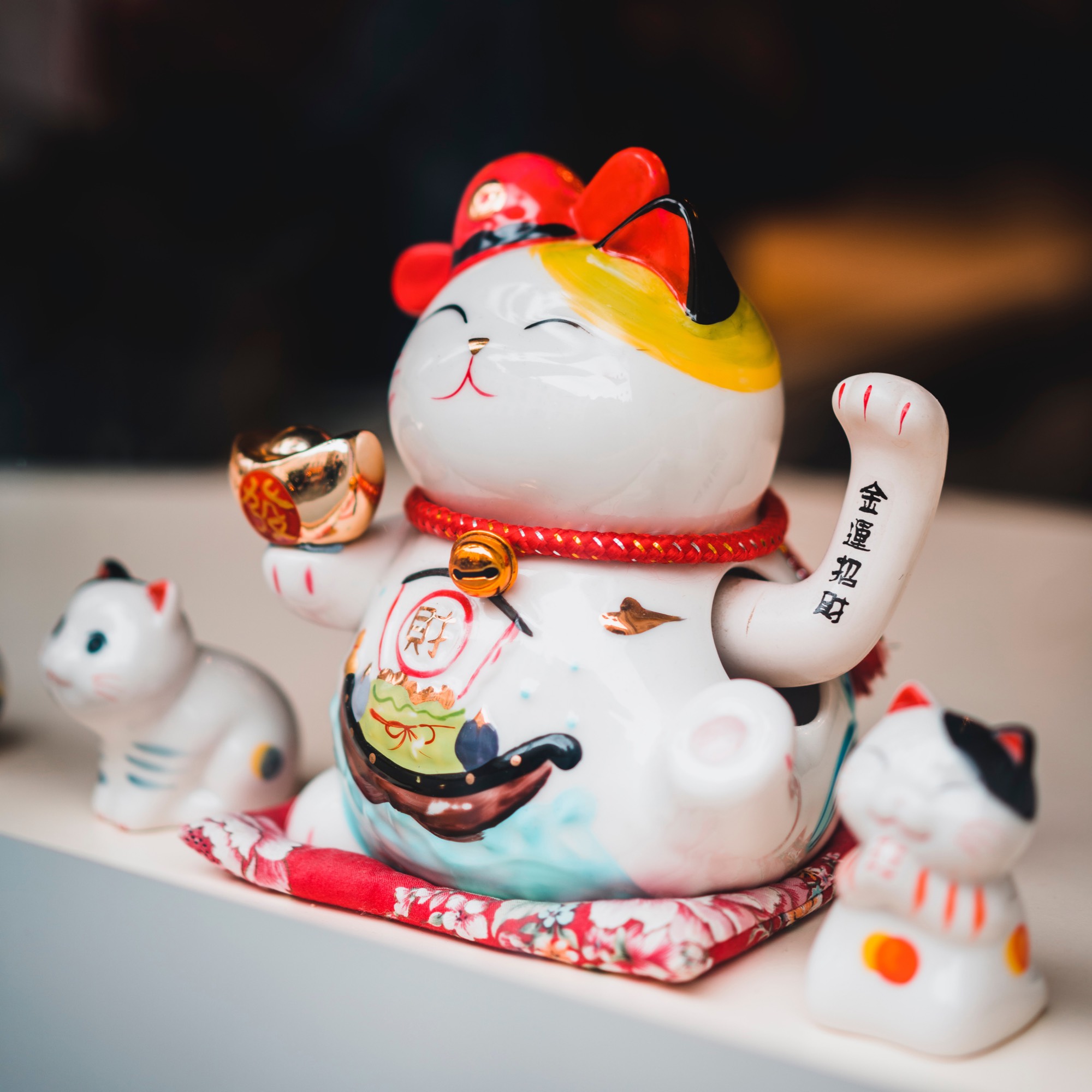Some cultures believe cats are bad luck or a symbol of evil, others quite the opposite. The Japanese consider them to bring good fortune and protection. The waving cat figurines often seen in stores and restaurants are called “Maneki Neko” which means “beckoning cat” in Japanese. Legend has it that a man was under a tree, sheltering from a thunderstorm when he saw a cat waving its paw as if beckoning him. He followed it into a nearby temple, and moments later the tree he had been under was struck by lightning. The man credited the cat with saving his life. We will never know if this myth is true or not, but there are many other cat myths that can be proved or disproved.
All Cats Love Catnip
False. Catnip is a lemony, minty herb related to basil and oregano. It contains Nepetalactone, a chemical that can transform cats into anything from a purring puddle to a frenzied maniac. However not all cats are affected by catnip. 30-50% of cats genetically lack sensitivity to the plant, and kittens don’t respond until they are at least three to six months old.
A Purring Cat is a Happy Cat
False. Cat’s do purr when they’re happy and relaxed. But they also purr for other reasons. Purring originates in a cat’s larynx (voice box) and is a form of communication as well as a method of self-soothing. While it can mean your cat is happy, if could also signal anxiety, illness, need or even anger. To determine why your cat is purring you will have to go by their body language. Are they curled up on your lap or in the sun? Happy cat. If they are waiting for their meal, they could be signalling that they’re hungry. If they’re sitting hunched, hiding away or displaying other unusual behaviours while purring, it may mean they’re sick. (See your vet!)
All Cats Hate Water
False. Some cats love water. Tigers, which are really just very big stripey cats who can eat you, love to play and swim to keep cool. Maine coon, Turkish Van and other domestic cat breeds with water repellent coats enjoy the water and may even try to join their humans in the bath or shower.
Cats Always Land on Their Feet
True-ish! By the age of nine weeks, cats have developed what is called a righting reflex. If falling, visual clues and their Vestibular Apparatus (in the inner ear) help them determine up from down. Then it’s a simple matter of extreme acrobatics and a very flexible spine that allows them to land on all four paws. It is, however, still possible for them to be hurt in a fall. Overweight cats, or very young/old cats with weaker bones are more likely to sustain injuries. Of course, a softer landing surface will reduce the chance of injury, and ironically, higher falls are less likely to cause injuries as the cat has ample amount of time to adjust their form. There are documented cases of cats falling up to 26 stories and surviving.
Do Cats Really Have Nine Lives?
An old English proverb goes: “A cat has nine lives. For three he plays, for three he strays, and for the last three he stays.” In Shakespeare’s Romeo and Juliet when Tybalt asks what he wants, Mercutio taunts, “Good king of cats, nothing but one of your nine lives”. But the earliest known mention of cats having nine lives dates back over 2000 years: “The Greedy and Ambitious Cat” from an ancient collection of fables known as Panchatantra.
It’s understandable why this myth has been so persistent throughout the ages. Cats are very clever, agile, flexible, super fast, have quick reflexes and (almost) always land on their feet. However this myth is false. They just as mortal as other animals and need no less care and attention than any other pet.
Clumping Cat Litter is Bad for Cats
This one is both True and False. Clumping litters are very popular because it’s possible to scoop out urine clumps as well as solids, keeping your cat’s litter box fresh for longer. Clay based clumping cat litters get their clumping properties from Sodium Bentonite, which is formed from volcanic ash. While it’s not toxic, it can cause irritation of the digestive tract, leading to vomiting or diarrhea. It can also form clumps inside kitty, leading to a dangerous blockage. The good news is that there are clumping litters that are perfectly safe for cats. Plant-based litter made from organic materials such as Bamboo or Soy (tofu) are safe for kitty to have a nibble.
Kitty Fresh offers both bamboo and tofu clumping litter, both 100% natural but also very effective at odour control. Subscribe to our all-in-one disposable litter box and litter, and you’ll never have to clean your cat’s litter box again. Just scoop daily and when your new box arrives every month, simply toss the old one, used litter and all, into the bin!

